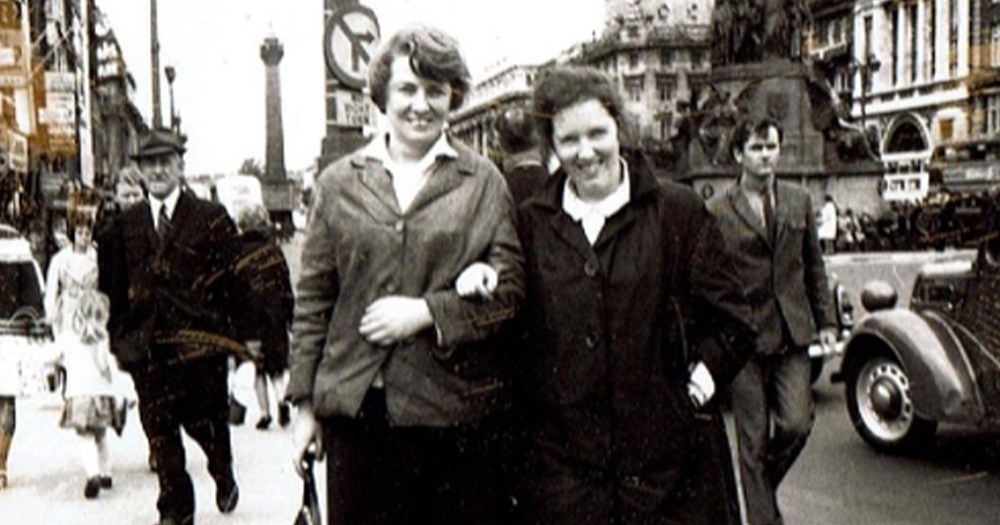Historian Maurice J. Casey spoke with GCN about his latest book, Hotel Lux, which has recently been shortlisted for The Irish Book Awards. It explores the lives of Irish radical May O’Callaghan and her close circle of fellow revolutionaries in 1920s Moscow, uncovering both their ideals and a surprising love story between two women who were connected through their parents’ shared friendships.
“My book is the true story of a radical friendship circle that first gathered in a famous Moscow hotel, the Hotel Lux, in the 1920s,” Casey tells us. “It tells a new history of twentieth century communism through the lives of these revolutionaries and dreamers.”
Originally a PhD study of May O’Callaghan, an Irish translator from Wexford who lived in Room 5 of the hotel after Vladimir Lenin’s death in 1924, the book equally focuses on a queer love story.
“Through my research, I discovered that May O’Callaghan’s time in the Hotel Lux was bookended by the birth of two children, Elisa Leonhard and Joyce Rathbone, daughters of her friends. On the other side of the Second World War, Joyce and Elisa met as adults and fell in love,” Casey explained
The pair, whose fated meeting was catalysed by their parents’ friendship with O’Callaghan, were women of compelling, yet divergent backgrounds.
“Elisa was the older of the two. She was born in May 1925 in the Kremlin hospital and spent her earliest months living in the Hotel Lux.
“Her mother Emmy Leonhard was a Hamburg-born revolutionary and her father Edo Fimmen was an internationally renowned trade unionist and anti-fascist organiser. May O’Callaghan played a role in helping Elisa to be born: she gave Emmy the money to pay for the taxi to the hospital and her medical care.
“Elisa grew up initially in Berlin, but after the Nazi rise to power in 1933 she was raised on the refugee routes of the 1930s; first in Switzerland, then France, Britain and Mexico. The family settled in Switzerland after WW2.”
Joyce, on the other hand, was born in New York in 1929.
“Once more, May O’Callaghan played a role of major significance in her birth. May introduced Joyce’s parents. Her mother Nellie Cohen was an East London Jewish communist while her father was the celebrated Aran Islands-born writer Liam O’Flaherty.”
Joyce, who became a pianist and eventually a well-respected piano teacher, was raised by Nellie and May, and did not meet her father Liam until she was in her 30s.
View this post on Instagram
Elisa and Joyce were introduced to each other by May O’Callaghan in 1949 but their romance didn’t fully blossom until 1961. According to the author, their letters reveal their deep affection and intellectual connection.
Elisa’s fluency in multiple languages and her poetic intellect shape her letters, take, for example, Elisa’s response to a comment from Joyce that her hands were ageing: “The sight of hands is very moving… and their passage from the smoothness of childhood to adult articulation, including spots and wrinkles, more poignant than all the literature on the transience of things.”
In another letter to Joyce, Elisa writes, “All my previous life feels but a preparation for loving you.”
Joyce’s writings are simpler but nonethess incredibly heartfelt with letters littered with pet names. She writes: “my lovely Elisa”, “dearest little Elisa” and “Elisa, my darling love”.
The letters suggest that the pair had familial support. Elisa’s mother, Emmy, treated Joyce like a daughter-in-law, and also suggest that May O’Callaghan, who brought them together, might have also understood and encouraged their relationship.
Casey recalls the profound moment he discovered both sets of letters. He uncovered Elisa’s letters in a rural Oxfordshire attic in 2017, and later located Joyce’s letters in Spain in 2021.
For him, this “staggering” archival journey underscores the power and resilience of the women’s story, which he is thrilled to now share beyond academia.
“It is a minor miracle when the personal documents of obscure figures from the past survive. It is even more miraculous when thousands of love letters between two women survive in separate homes, maintained by two different families and traced by one obsessive historian,” he shared.
“It means a great deal to me that this story and these remarkable lives can now find another existence in readers’ imaginations.”
View this post on Instagram
Hotel Lux by Maurice Casey is available to purchase here.
© 2024 GCN (Gay Community News). All rights reserved.
Support GCN
GCN is a free, vital resource for Ireland’s LGBTQ+ community since 1988.
GCN is a trading name of National LGBT Federation CLG, a registered charity - Charity Number: 20034580.
GCN relies on the generous support of the community and allies to sustain the crucial work that we do. Producing GCN is costly, and, in an industry which has been hugely impacted by rising costs, we need your support to help sustain and grow this vital resource.
Supporting GCN for as little as €1.99 per month will help us continue our work as Ireland’s free, independent LGBTQ+ media.
